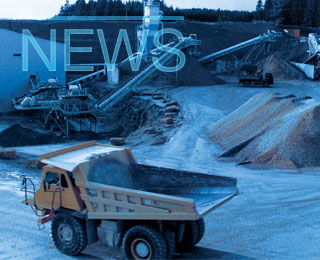Stock market listed cement companies posted aggregate earnings of Rs1.7 billion for the first quarter (July-Sept) of the current year (1QFY05) , which represented 58 per cent increase over the profit earned in the comparable period of the previous year. Excluding Zeal Pak and Pakland, which had not announced results until the first week of this month;
Saadi Cement which was under trial production and Mustehkam and Chakwal, which were non-operational, the remaining 16 of the 21 stock market quoted cement companies operated at average capacity utilization of 93.1 per cent, compared with capacity utilization at 74.3 per cent in the similar quarter
of FY’04.
Abdul Rasheed, analyst at InvestCap, suggested that the cement units had made collectively the highest ever quarterly profit of Rs1.7 billion, due primarily to 26 per cent growth in cement demand. Among the cement companies, DG Khan was observed to have earned the highest profit amounting to Rs282 million, followed by Lucky, which made Rs253 in earnings and Bestway Cement that earned net profit of Rs226 million. Maple Leaf, the second largest cement company in the country stood at the fifth slot in terms of profitability.
The average manufacturing costs of cement sector increased by 3 per cent to Rs1,940 per ton, because of rise in furnace oil and coal prices, but the sector managed to improve its gross margin by 420 bps, to 32.9 per cent, thanks to better retention prices for exports and domestic sales in 1QFY05. Cement exports accounted for 11 per cent of the total dispatches for 1QFY05, which the cement manufacturers admit was due to rising local demand that enabled them to negotiate better prices for exports. The recent export prices for cement range between $40 to $45 per tonne, which compares with export price of $30 to 35 per tonne at the start of FY’04. Companies were aggressively entering into exports, which previously they did merely to cover their variable costs.
According to analysts, during the period under review, average retention prices for those manufacturers stood at Rs2836/t, marginally higher than the previous quarter; average manufacturing costs were relatively unchanged at Rs1640/t; and average EBITDA margins were higher by 6 per cent on a q-o-q basis to stand at Rs1151/t. Despite an increase in international coal prices, there was practically no change in production costs per tonne. Higher export demand had caused an increase in capacity utilisation levels as well as in retention prices.
Aggregate cement sector dispatches during the quarter stood at 4.1Mt, 28 per cent higher on a y-o-y basis. During Oct’04, total sales stood at 1.3Mt, which was 11 per cent higher on a y-o-y basis. But for all that, growth in EBITDA margin levels had begun to slow down, which was attributed to slowdown in growth of retention levels and the gradual increase in production costs. The main driver of manufacturing expenses was the energy costs and the rise in international crude oil prices, which had impacted international coal prices. Coal prices peaked at $70/t(C&F basis) in Jun’04 and since then have gradually eased to the current level of $55/t (C&F basis). During Ramazan there is generally a slowdown in cement dispatches because of sluggish construction activity. That was evident from October cement sales figures which stood at 1.3Mt, 11 per cent higher on y-o-y basis but on m-o-m basis sales, were lower by 7 per cent.
